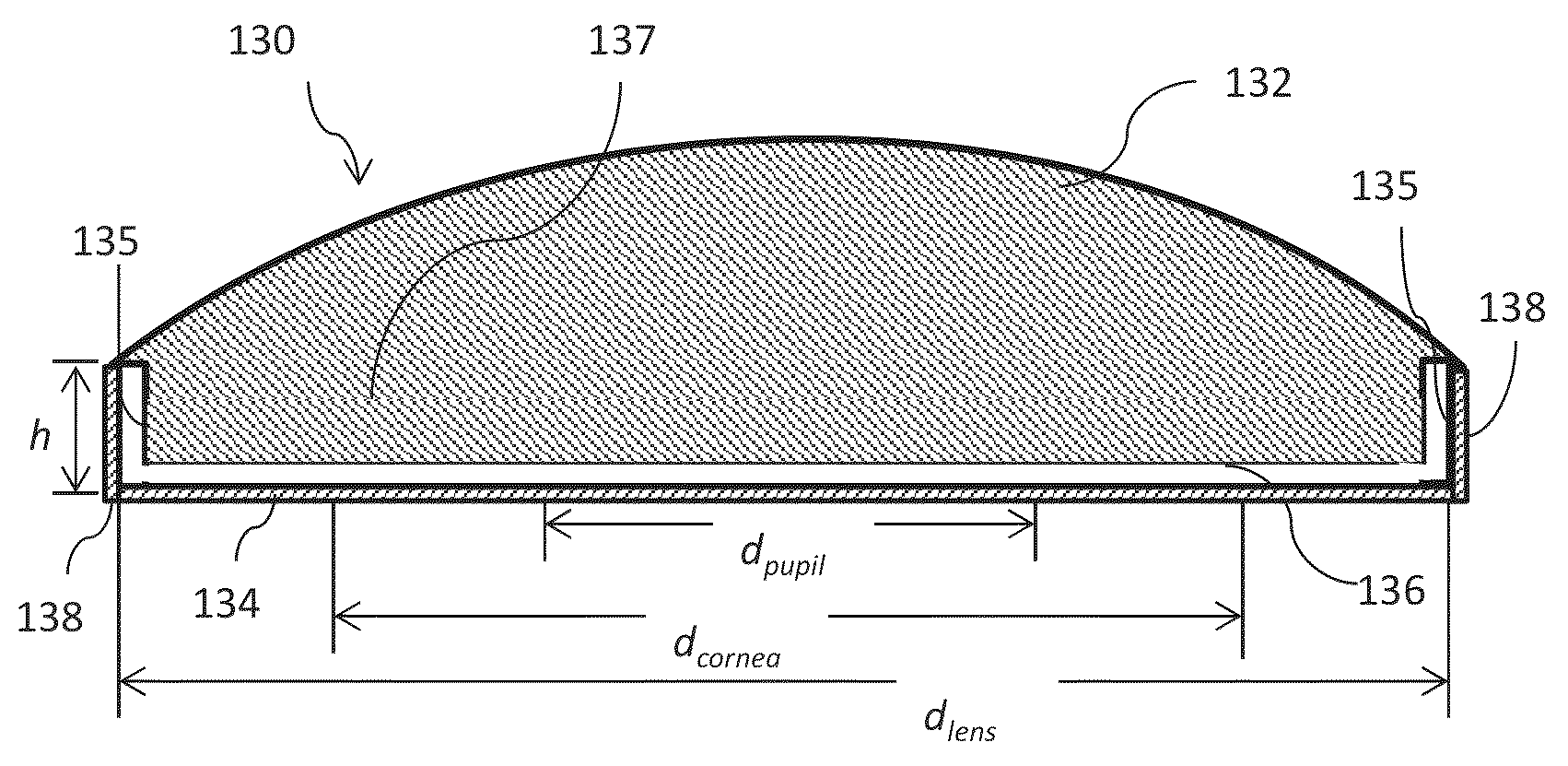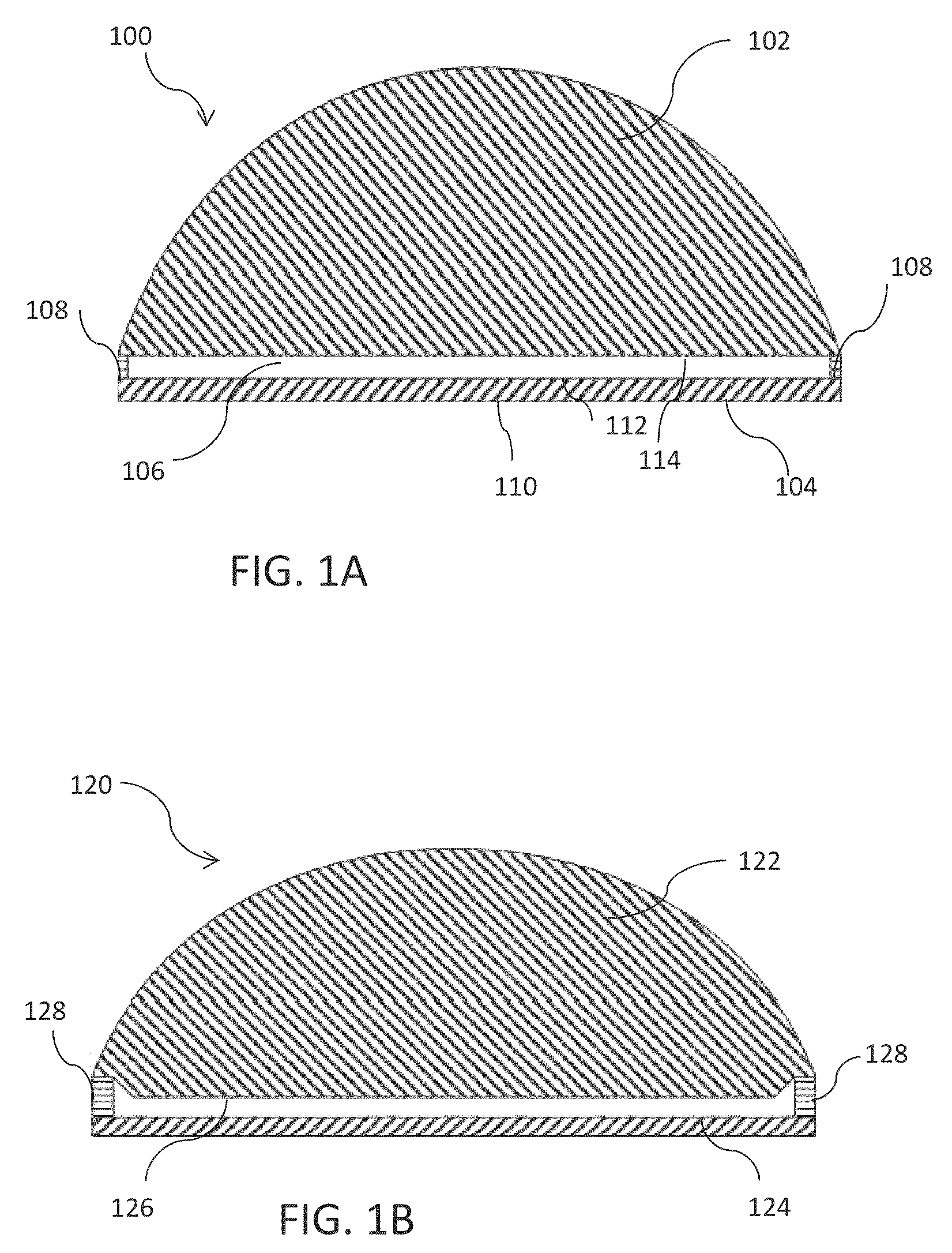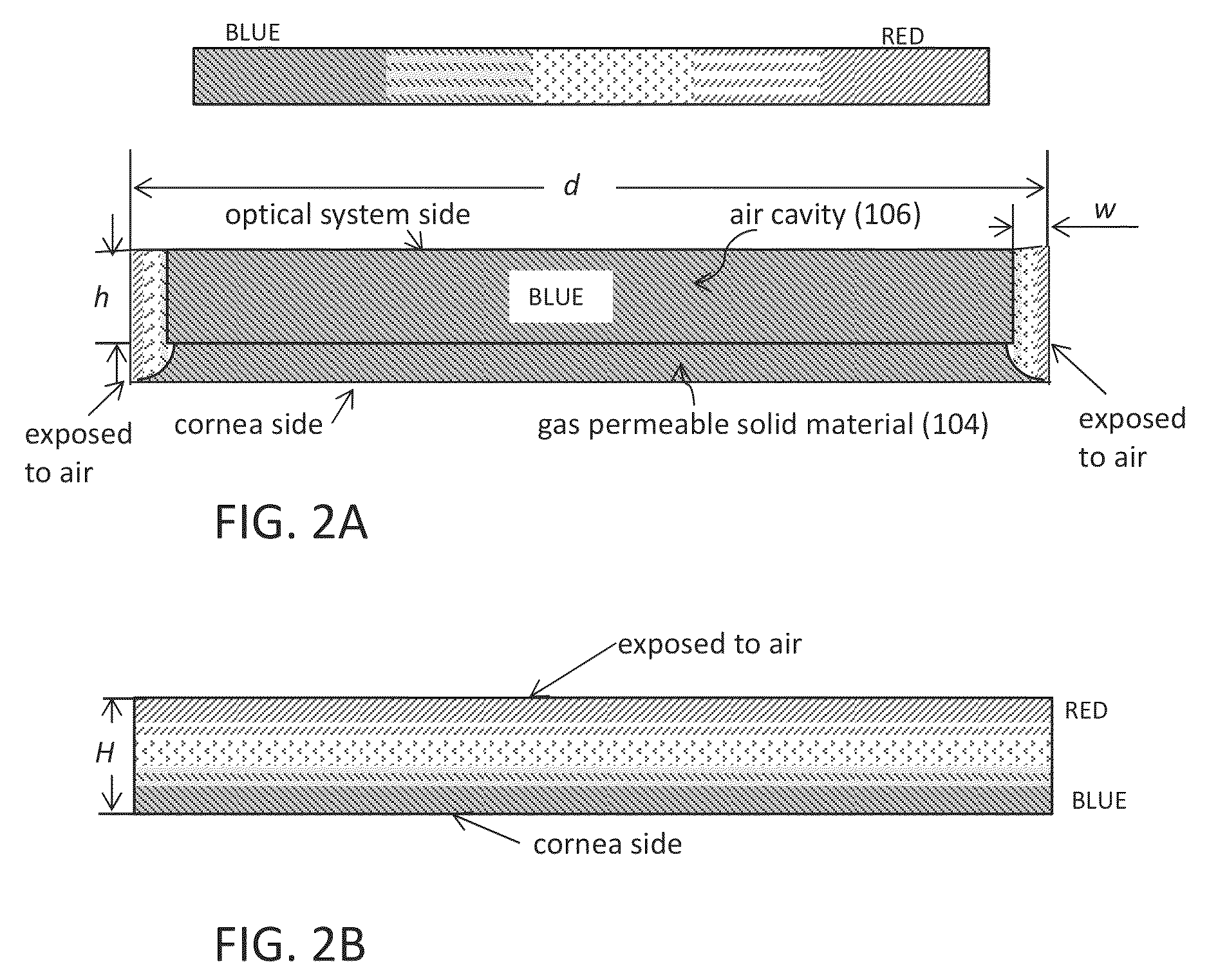Aerated contact lens assembly
a contact lens and assembly technology, applied in the direction of spectacles/goggles, instruments, spectacles/goggles, etc., can solve the problems of limited oxygen exchange capacity, lens unsuitable for extended wear, and insufficient oxygen permeability of presently available rgp plastic,
- Summary
- Abstract
- Description
- Claims
- Application Information
AI Technical Summary
Benefits of technology
Problems solved by technology
Method used
Image
Examples
Embodiment Construction
[0023]For purposes of the following description, certain terms may be used interchangeably while referring to the same object. In particular, the word “gas” includes, but is not limited to, oxygen and carbon dioxide. The terms “communication”, “diffusion” and “transport” may be used interchangeably to refer to the movement of gas within and / or across lens components.
[0024]FIG. 1A provides a schematic drawing of the cross-section of an embodiment of the invention. The composite lens 100 has axial symmetry with three layers: layer 104, a thin oxygen permeable layer adjacent to the surface of the eye, which can be made of an RGP plastic, layer 102, a thick transparent optical assembly, which may be oxygen impermeable, and layer 106, an air-filled cavity. Surface 110 corresponds to the surface of the lens that is immediately adjacent to the eye surface and, although illustrated as a flat surface, will be made with curvature appropriate for the wearer's eye. Surface 110 may be in physica...
PUM
 Login to View More
Login to View More Abstract
Description
Claims
Application Information
 Login to View More
Login to View More - R&D
- Intellectual Property
- Life Sciences
- Materials
- Tech Scout
- Unparalleled Data Quality
- Higher Quality Content
- 60% Fewer Hallucinations
Browse by: Latest US Patents, China's latest patents, Technical Efficacy Thesaurus, Application Domain, Technology Topic, Popular Technical Reports.
© 2025 PatSnap. All rights reserved.Legal|Privacy policy|Modern Slavery Act Transparency Statement|Sitemap|About US| Contact US: help@patsnap.com



